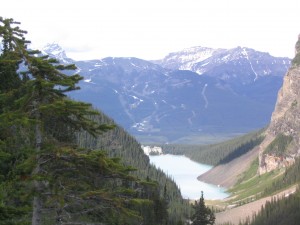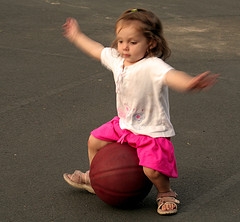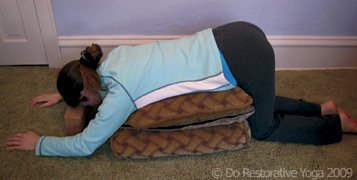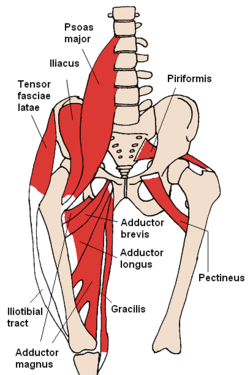If you exercise beyond your abilities, then 24 to 72 hours later you may experience ‘Delayed On-set Muscle Soreness‘ or ‘DOMS’. The pain and stiffness is likely the result of tiny muscle fiber tears. The body will recover and build up strength in rebuilding the muscles after a few days. Gentle massage and stretching can help ease the discomfort. Resting the muscles is a good option.
I learned the term ‘DOMS’ on a vacation trip to Canada when we hiked 3.5 miles from the parking lot of the hotel on Lake Louise B.C. to the Plain of Six Glaciers Teahouse. Coming back down the 3.5 miles my legs were turning into quivering jelly. I’m surprised we managed to do the hike. We most definitely overdid that day. Two days later we were hobbling around in agony.
Overdoing
Unfortunately I’m finding it is very easy to over use my muscles. Two weeks ago I made myself rather sore twice with DOMS. I slathered on Ultra Strength BenGay, used my heating pad and took Ibuprofen.
First overused my upper legs. Our ground is a mix of red clay and sand intermixed with sandstone. I was out in the yard noting more small sandstone rocks brought to the surface by wind and rain. I usually bend to pick these up. My bending over muscles are good from poop scooping chores. I decided to use deep knee bends because am needing to practice this exercise to build up the muscle strength to help me mount my horses from the ground. I managed about 15 deep knee bends while walking around the backyard picking up the stones. A couple of days later paid the price with pain and stiffness in my legs that made it painful to even walk.
My legs being sore didn’t prevent me from sitting. Another day tried sitting on a stability ball as my office chair for about 2 hours to work on my posture and balance. I had no idea that I was overdoing so badly because sitting on a balance ball is hard work. It didn’t feel like hard work, but my muscles were firing constantly to keep my balance. This resulted in very sore shoulders and stiff neck with a headache, as well as areas on my back and hips.
Being so sore, the main exercise for last week was only to spend a few moments during the day to stretch out my right knee and shin, as well as practicing balancing on one foot. From my prior post of “Yoga on a sheet” I had noted that my right knee and right shin to ankle and down over top of my foot is very stiff. I can’t think of why this part of my body became so stiff and why my left side isn’t stiff. I did injure my right knee this summer, so maybe that is the reason.
In upcoming posts I will discuss how to stretch out the shin muscles and about using a balance ball as a chair.





